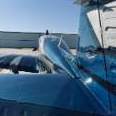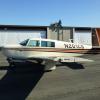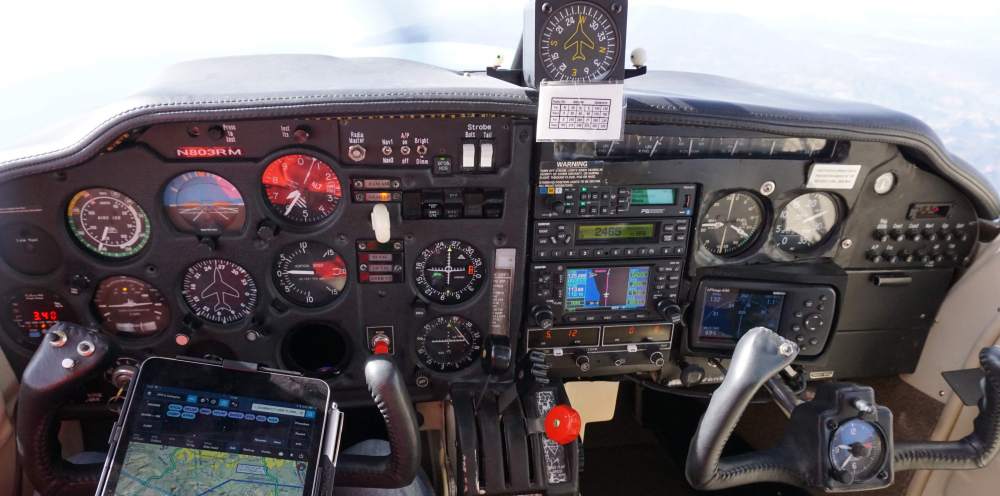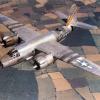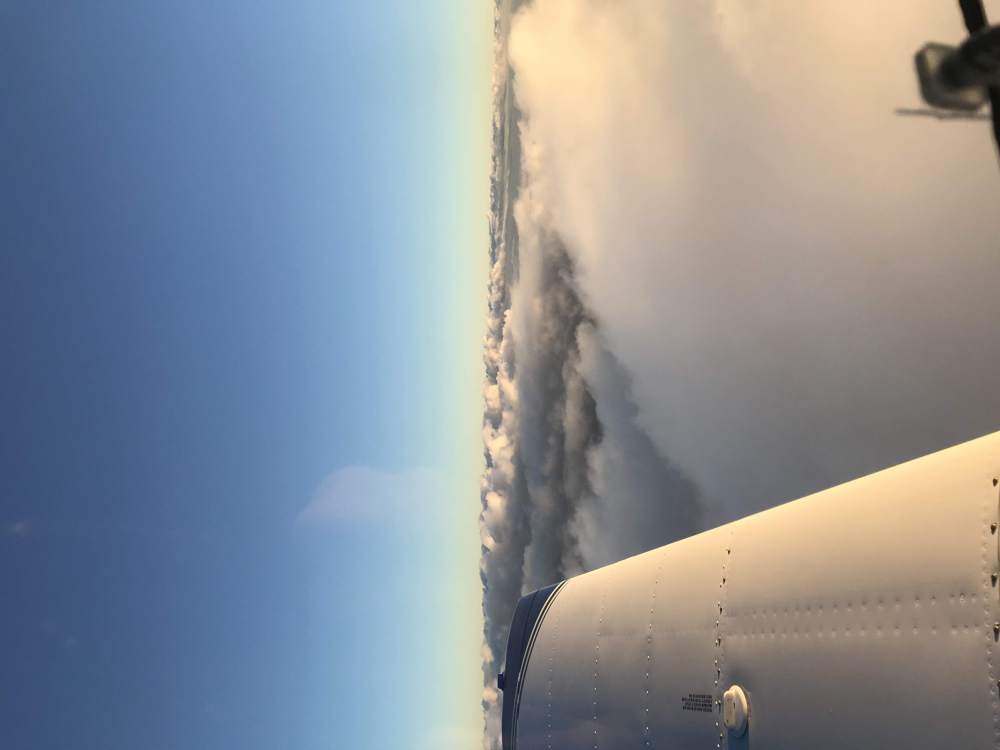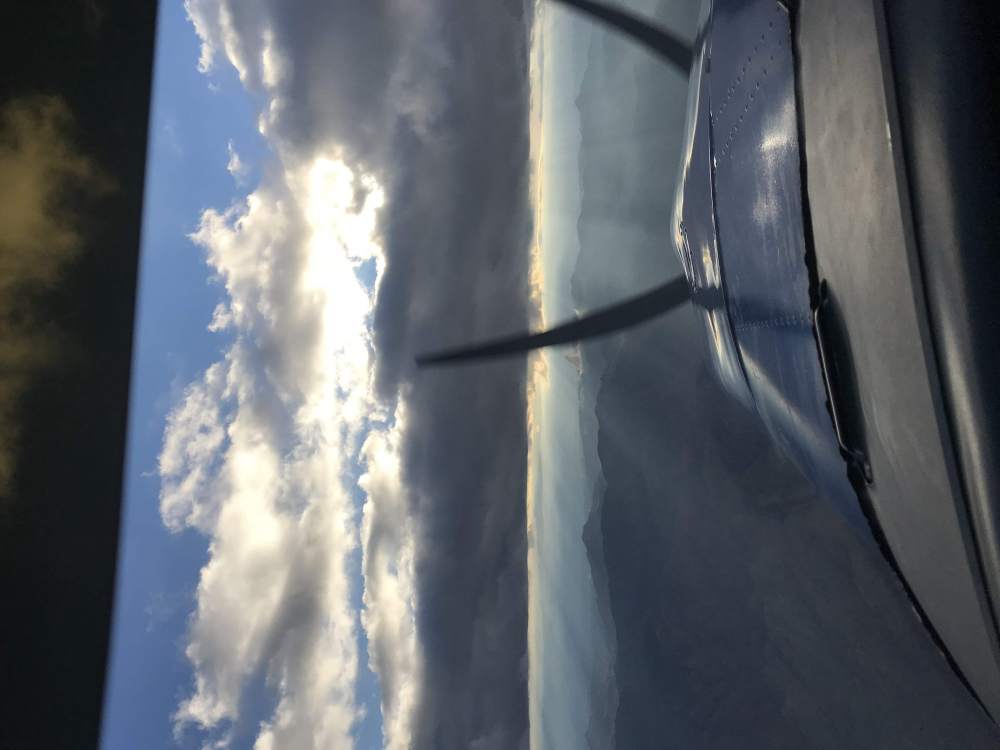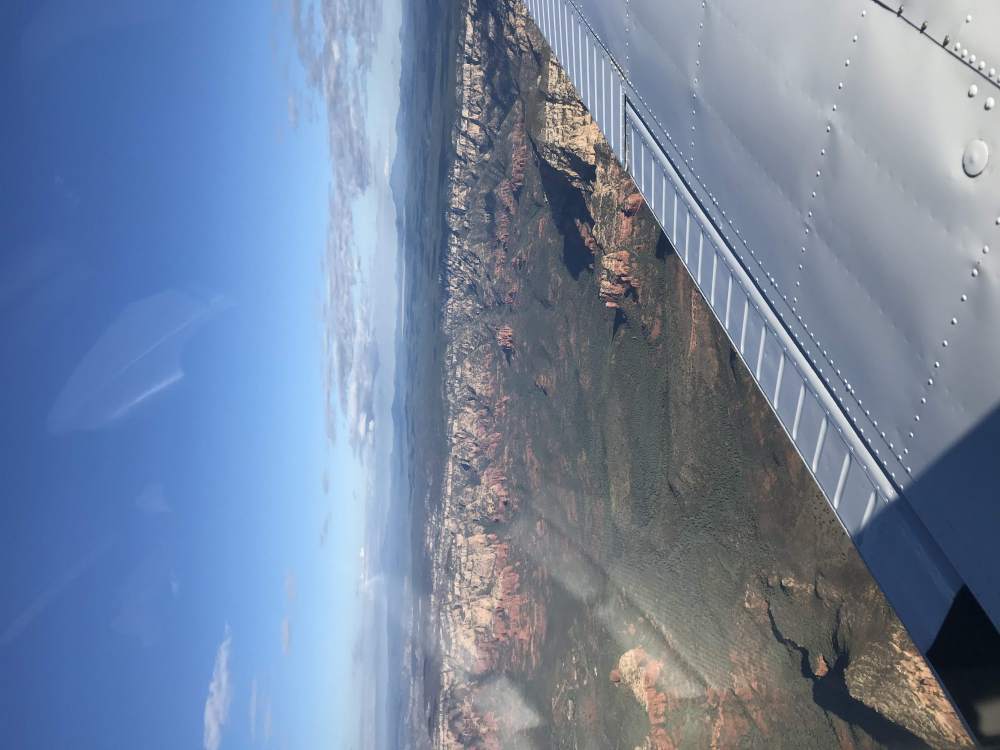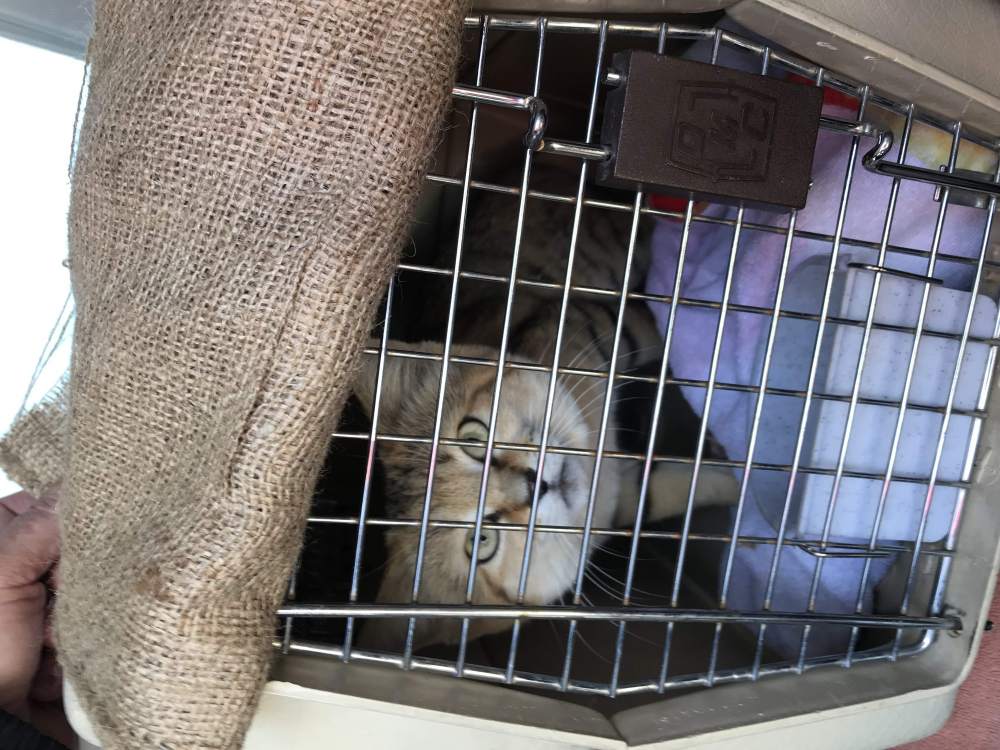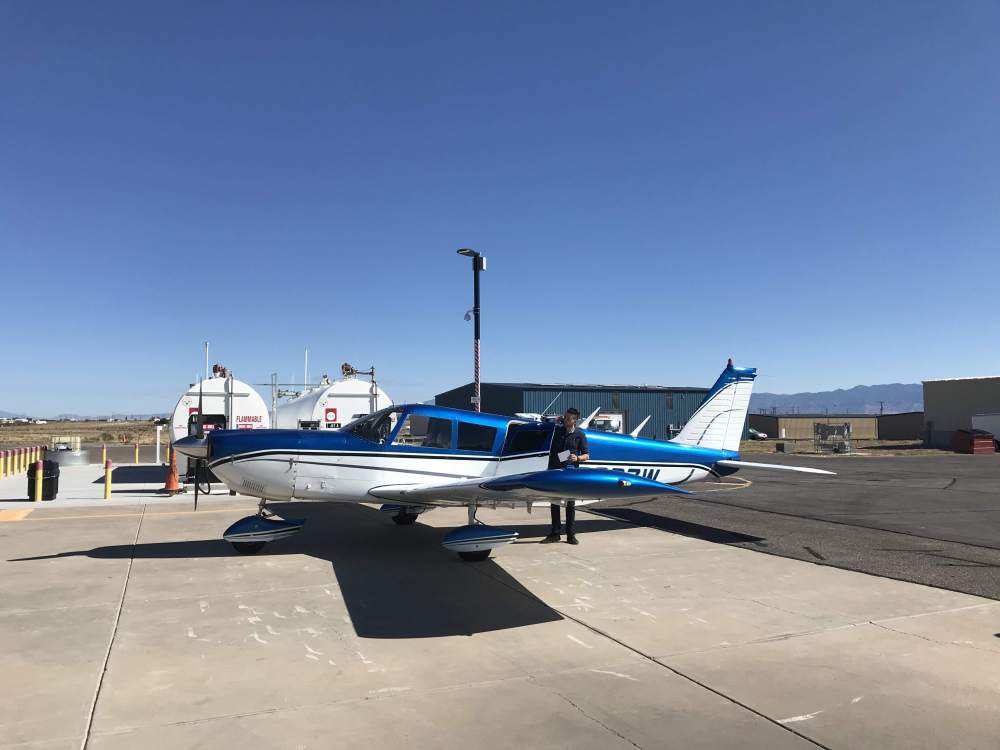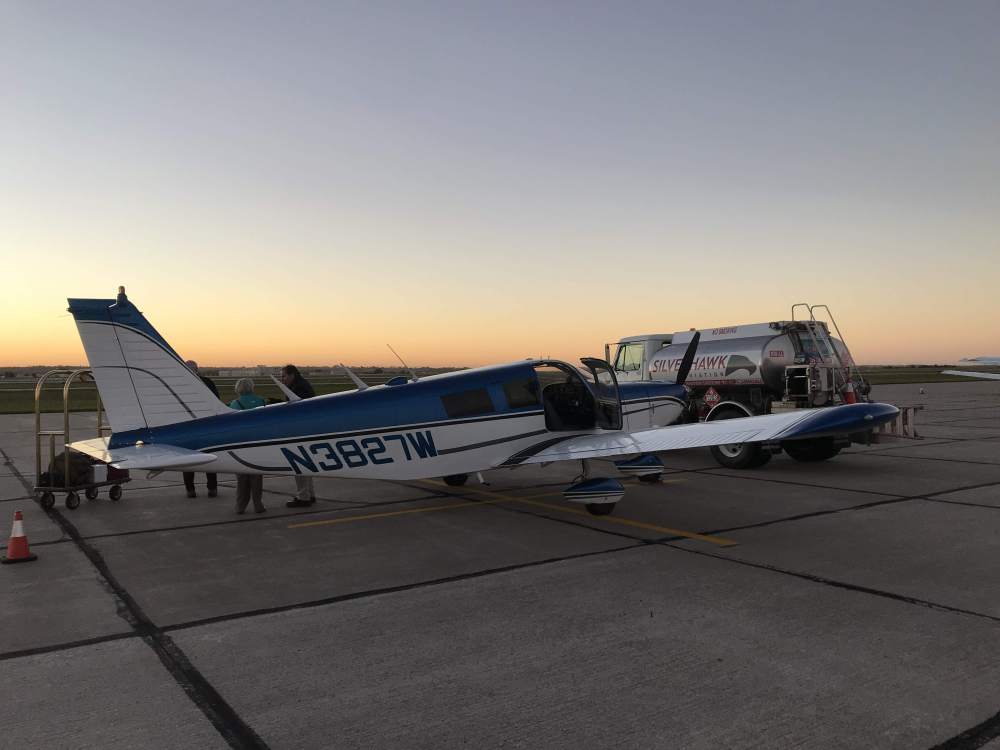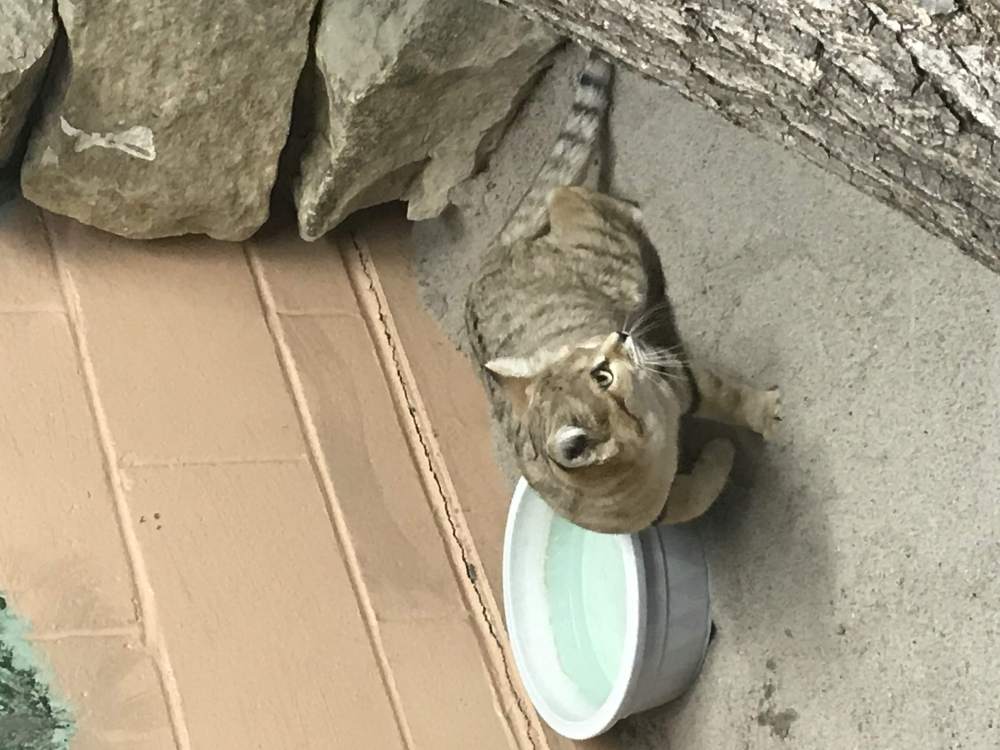Leaderboard
Popular Content
Showing content with the highest reputation on 11/08/2018 in all areas
-
Thank you for all the input you gave me on my dilemma on curing the inadequacies of the value guides. I think this is what I am going to do. Please let me know if you think I am on the right path. I am going to use my old MAPA format but instead of talking about a certain topic each month, I will just give some general information about buying, selling and pricing/appraising Mooneys. I will separate the data by model (pre-201, M20J, M20K, etc...). I am going to give it away in a PDF format. The only requirement I will have of the donee is that I get his or her name, valid email address and phone number and a little note about what they expect to do with the data (use for buying, use for selling, use for insurance, use for just 'hey, I like stuff like this'). If the data is being used to purchase or sell a plane, I will ask the user of the guide to provide me with actual sales data after the sale is completed so that I may keep a confidential record of sales that happen outside of my business. I will ask the user to donate to me voluntarily if the user finds the data useful. If the user doesn't want to donate, no harm, no foul, but if the guide helps them make a wise $50,000 or $100,000 or $200,000 decision, perhaps they can make a small contribution to me for the time and effort put in to produce and keep the data current. I will, of course, identify myself in the guide and explain what my services are with respect to buying and brokering Mooneys. This plan will not likely fix Bluebook or VREF and it will not likely have a real fix to the appraisal points used by lenders (who are shackled to BB and VREF). However, having the data available and a reasoned approach to how to add properly give credit for equipment in a plane may eventually have an affect on both lenders and existing value guides. Does this sound like the proper strategy? Does anyone else have any ideas or want to add to this plan? Thanks again for all the input to date. It has been a good learning experience for me. Jimmy9 points
-
Small ridges, unlikely. Control surfaces not put back exactly how they were removed, very likely.7 points
-
After the emergency landing at Pt. Mugu NAS in early July (caused by a piece of ram air door gasket that found its way into the fuel servo throttle body) and a somewhat eventful reposition flight over to CMA ... The high fuel pressure issue was conquered, an "early" (which ultimately become a "timely") annual was performed, a bunch of crusty old stuff (magneto harness, p-leads, etc) was swapped out, and everything checks out (though a capacitor on one of the IRAN'd mags did fail just as I was about to pick it up, a couple of weeks ago; went back to Aero Accessories to be addressed). The left fuel tank, that was empty at Pt. Mugu, has not shown any signs of leaking, over several months. I'm watching it, but, so far, it's always been exactly where I left it (dipsticking it after and before every flight). Fuel pressure is right in the middle of the green arc. Mag drops are exactly 100 RPM on both sides. Runs smooth, no missing. Temps are cooler (the baffles were installed incorrectly). Controls are smooth (the elevator bungees hadn't been removed or greased/repacked in years). Brakes work good (they were well worn). Two mild flat spots on the tires from standing on the brakes (Runway 27 at KNTD has arrestor cables I wanted to avoid!), but there's still tread. Electrical system seems fine, on the same battery (on a tender while it was being worked on). No hiccups like before. Did a couple of low approach trips around the pattern at CMA before I was comfortable flying back to TOA. Then the next day flew up to Paso Robles on my "scaredy-cat" routing (8,500' and an airport, or the surf, always within gliding distance); 3.5 hour round trip (tach time), and she purred. No hiccups. Taking her out to Marana tomorrow to have the rest of the avionics work done (S-Tec serviced the pitch servo, which has to be reinstalled, and I'm swapping the EDM-700 for the -830.) Didn't expect to need to pump $21,000 into her so soon, but, it is what it is.5 points
-
I worked for Power Flow during and after college (1998-2001), just as the company was getting started. I did a lot of test flying on their C172, 177, and Piper exhaust systems. I assure you there was a noticeable increase in performance on the O-320 and O-360 powered airplanes. We flew hundreds of hours testing different exhaust configurations, and even more to ensure the FAA STC requirements were met. We strived to provide a quality and reliable product. Of all the test flights I flew, I can assure you that when compared to the stock exhaust system, there was more power on takeoff with shorter take-off runs, better climb performance, and lower CHTs in cruise. This was not a "seat of the pants" measurement.. we always flew with a co-pilot who would document each test flight. We had a Piper Arrow that we conducted several tests on. This was the only fuel injected airplane equipped with a PFS system I got to fly on. Not sure if the constant speed prop "absorbed" the power gain, but the documented performance gains were not there. What was there was a decrease in fuel flow when compared to identical power settings with a stock exhaust, and lower CHTs. I left the company before they came out with any of their Mooney products. Fast forward (whoa) 15 years, and I had my own M20C that failed an exhaust pressure test during annual. Rather than re-welding/rebuilding for $1500, I decided to go with a PFS. The customer service had not changed since I worked there (excellent) and I had a new PFS installed on N6XM in no time. Similar to my experience with the Arrow, I did notice lower fuel flows, and MUCH cooler CHTs (around 15+ degrees cooler on each cylinder), but that seat of the pants increase in power was not there. Unfortunately, N6XM met an untimely demise with a landing gear collapse due to an incorrect preload setting during annual, so I did not get a good data set for comparison. Back to this thread... carbon monoxide poisoning simply should not happen with a PFS. There are no welds in the heat exchanger section to leak. That alone, along with the benefits of cooler CHTs, lower fuel flows, and a possible increase in HP make it a no brainier for me. If the time comes to fix the exhaust on the J model I now own, I will once again forego the $1500 and put my name in line for a PFS.4 points
-
Nothing slows a Mooney down quite like poor rigging. And no one seems to be able to coax as much speed out of a good rigging job as Don Maxwell.3 points
-
It's a heart-wrenching decision but we are selling our rare M20D, one of only three still flying. She's in amazing shape and just passed her last annual with no squawks and a new interior. She's ADSB compliant with a new Stratus transponder. We've created a blog site with all the information, price, and lots of pictures and stories. Hoping she goes to a new owner that appreciates and will maintiain her rarity. https://fixedgearmooney.blogspot.com -Sven2 points
-
There's a spring in there? Mine feels like it's just the weight of the vane. Now that I think about it, if you're not stalled, the wind should actually be blowing down on the vane anyway, so there shouldn't need to be a spring in there, right? Also, when you rotate the plane on takeoff, the stall warning would only go off if you were rolling with the wings at an angle greater than the critical AOA. Given how much I remember the nose is pitched up in level slow flight with flaps down, I can't say I ever remember rotating that much on takeoff, so I think that would be a pretty dramatic "yank her off the runway" type of nose rotation before you'd trigger the stall warning.2 points
-
The P/W PT-6 I fly allows up to 10 hours of flight with Avgas. Temps run hotter so you have to keep an eye on that.2 points
-
Kevin Kammer from Mooney told me he test flies the new planes at 3100# and 45" CG. I was curious about whether the G1000 stall warning alerted faster than the beeper, and he said they are tied to the same switch. I had incorrectly assumed "Bitchin' Betty" was hard coded to an airspeed level somewhere in the G1000. My M20TN probably flies very similarly to your Bravo (just faster and using less fuel, LOL). He asked me to duplicate his method, so, power off: at 3100# and 45" i got the following: Stall Warning clean: 73 Stall Buffet clean: 65 Stall Warning Landing configuration: 65 Stall Buffet Landing configuration: 57 Betty and stall beeper are at the same speed, as you said they should be. Approx 8 KIAS between warning and buffet. For your situation, I'd record the power-off warning and stall buffet speed in T/O and LDG configuration. See if you have the 8 KIAS difference. Then I'd ask: are you getting book cruise speeds? If you are in a TKS bird, then your ASI is probably indicating incorrectly. Most are 8ish KTAS slow. Lastly, a perhaps obvious question: Are you certain that the Alternate Static is closed and not leaking somewhere?2 points
-
2 points
-
Many gas turbine engines specifically allow the use of 100LL and/or unleaded gasoline. In fact the P2V had both piston engines and jet engines, all of which ran on Avgas. Our EC135 helicopter has Turbomeca Arrius 2B1 engines. They allow a good number of hours using 100LL avgas without restrictions or overhaul requirements.2 points
-
I use Micro-Mesh regularly. Some thoughts: a) Removal of scratches requires significant sanding down of the plastic surface to a depth below all scratches. b) Sanding needs to be done in an organized manner, over a wide area. Optical clarity requires a uniform surface, without low spots. c) The finer grit papers need to be used far more than it at first seems, as you need to remove all the micro scratches you just put there with the previous sanding. d) Use a lot of water as you sand. e) I use a BluePoint 3 inch buffer (snap-on) with wool pad and "Flitz" (the metal polish) as a final finish. Done with skill, it results in world class clarity. Done without care and burns result. This heli is 17 years old and I've been able to keep the windscreens perfect, including sanding down through the minor crazing and polishing. No imperfections.2 points
-
Answers, based on my experiences... 1. Although you can reuse your EGT, CHT, and voltage, JPI will recommend against it, as your CHT and EGT probes get brittle over time due to heat. They may work for weeks, months, years, or not at all. I recommend spend a few extra $$ and replace them at the time you change out the Moritz cluster to the EDM-900. As part of the 900 kit, you'll receive a new voltage harness anyway. 2. There's no need to purchase and install an EI or any other tach. Once you or your shop purchases the instrument, JPI will set 2700RPM as the redline (along with other data from your AFM) from the factory data sheet you or your shop will provide before JPI ships it. 3. Yes 4. Your tanks will physically hold either 108 gallons (102 usable), OR 106 gallons (100 usable). You'll have to fully-fill your tanks to determine what they hold. Mooney certified Ovations (and Eagles) with different usable amounts for various reasons throughout its lifecycle. There is a filer neck kit available from Mooney that allows you to legally placard your tanks to indicate the higher usable fuel level and set your EDM-900 to the same value. What you cannot do legally is set your JPI to indicate 100 or 102 usable with your certification level and placarding indicating lower...you need the kit installed that properly converts the levels. JPI will only configure the instrument to what the airplane legally indicates. I had this done on my airplane before the 900 went in. Get ahold of me if you want the part number of the filler neck kit. 5. Per Bob Minnis, the original STC holder and developer of the 310HP conversion, the best/optimal setting to get the most life out of your cylinders while providing the best engine performance under given settings is 2550RPM. Although the engine is rated for 2700 max continuous thrust, 2550 is the absolute sweet spot if you want to maintain proper cylinder health. Proper operating regimen on the Eagle should be full power takeoff and climbout, then pull back to LOP at 23MP (generally below ~7000-8000) and 2550RPM, and full-throttle at 2550RPM at higher altitudes (generally above ~7000-8000). There's no tangible benefit to, or evidence of reduced cylinder life by running less than 2550RPM in cruise on a 310HP-converted Eagle or Ovation. 6. The GTX335 and GTX345 are nearly the same cost, so with respect to your budget, I wouldn't be penny-wise and pound-foolish at this juncture by doing the 335. The added features of the 345 (and even the L-3 Lynx NGT9000) are certainly worth the added cost. Steve2 points
-
2 points
-
One thing nobody is mentioning is exhaust entering through the belly panels and wheel wells. Any gaps or wrinkles in the belly skins can let exhaust into the belly then up behind the upholstery and into the cabin. Also check your rat socks in the wheel wells. They are actually there to keep exhaust out of the plane not rats.2 points
-
2 points
-
Although I'm not sure of other possibilities, I'd bet that you do have an exhaust valve guide that is going bad. A careful borescope exam of the exhaust valve faces should tell you which one it is. It's happened to me twice so far. The times on the cylinders may not correlate with which one is the offender. In one of my cases, there was also a hiss at the exhaust when pulling the prop through the compression stroke for that cylinder. The leak was also audible at subsequent static compression check, but the compression number was still in the 70s. In the other case, the compression on that cylinder turned out to be low. In both cases, the guide was out of spec on wobble test with the valve covers off. As a quick diagnostic that an owner can do easily, I'd say borescope exam through the bottom plug hole is a pretty powerful way to anticipate an A&Ps findings.2 points
-
2 points
-
I'd follow Jose's list, and also fly a 3 TRACK airspeed calibration test flight for a couple different power settings in smooth air, noting your indicated airspeed, altitude, barometric pressure, and temperature. On the ground, follow your POH corrections to get calibrated airspeed, then calculate true airspeed given the test conditions. Then use the 3 stabilized ground speeds from the three different tracks and an online TAS calculator to get your real TAS. Then you'll know if you have an indication problem or a real problem. Flying tracks is crucial here...not headings. Set OBS mode on your GPS and dial up the desired tracks 90 degrees or 120 degrees apart, and let the autopilot fly them. Hand trim to zero-out pitch input from the autopilot as well. If there really is a problem, I'd look at gear doors and flaps first. Sent from my LG-US996 using Tapatalk2 points
-
The heat shroud around the muffler should be removed every annual and the muffler should be inspected. Preferably under low pressure and soap and water looking for bubbles. No need for cutting. A Sensorcon or other similar low level detector is a good tool to catch an impending muffler failure. I test the heater for CO on every flight by holding the Sensorcon in front of the heat vent and look for changes with it on and off. @Frozen Flying I'm glad my little field trip encourage you to get a detector and saved you from a similar (or worse) fate. Thanks for sharing! Cheers, Dan2 points
-
Just go with the 900 and get rid of multiple other gauges cluttering up your panel. I got rid of Tach, MP, Fuel levels, Fuel Pressure, Oil Pressure, Oil Temp, Amps, EI 4 cyl egt cht, and fuel flow. It is worth the extra $1000. From what I understand is you are not really getting two different (redundant readings) by keeping your old gauge (you would be getting two readings of the same thing on two different gauges. Just a PP opinion only I am certainly NOT the expert. Tell the shop to hold for a day or so and make a good decision (JPI should not have a problem with returning the 830 for a 900).2 points
-
My fuel servo has slowed mine down considerably over the past 3 weeks.... Top speed has been 10-15 ktas, behind a tug, back and forth from the mechanics hangar and mine.2 points
-
2 points
-
Meant to post this Sunday. It was a bumpy day down low in Oklahoma but still a beautiful day to fly. Caught a video of my final approach into my home airport KGOK (Guthrie, OK).2 points
-
I think a cheeseburger is about $50 in Vail so $165 for a hangar doesn't sound all that bad.1 point
-
Lance - this is where mine is (photo above co-pilot side port) and works fine. Ran wire along top of engine and out co-pilot side baffle. Side note - got led light yesterday. Works great Thanks!1 point
-
My oil temp probe for the JPI is installed as per the JPI manual - no problem with unbelievable readings (#3 CHT is unfortunately not the same - problem solving TBD) Why people decide to install probes in non-approved locations bewilders me - for instance this case was an expensive lesson!1 point
-
Sensorcon's literature recommends NOT putting the sensor up to engine exhaust. Mine performed well during calibration using their supplies and systems, I'm not worried that it suddenly doesn't work. Guess the new muffler I out on ~100 hours ago is still in good shape!1 point
-
That is the stuff I used. I cut all pieces to fit then carefully used permatex RIGHT STUFF BLACK let it cure and trim to clean up. I tested it with a garden hose and straight stream of water trying to get it to leak. No water got in. Only issue is when you stick it down make sure it's where you want it. It is a pain to relocate. Sent from my E6810 using Tapatalk1 point
-
Just a thought: If your engine is going to be apart for inspection, then re-assembled, but not overhauled. Consider renewing various wear items such as cam and lifters. (assuming you have a flat tappet cam) Main and Rod bearings, rod bolts and so on. Many disassembly-inspections go back together without replacement of those wear items. Sometimes they don't even remove the rods from the crank. Done correctly, you should have an engine that will go another 2000 hours from the "inspection". It may not increase the value like a true overhaul would, but it will have some value, especially to you.1 point
-
The only help I have is on the JPI 900. I simply removed all probes and replaced all. I did not want to mix old (points of failure) and new. The price difference (a few hundred or so) is not much in the grand scheme of ownership. My thought is do it right the 1st time. The other thing I did was completely remove the tach and all other gauges that the JPI now handles to cleanup the overall panel (your panel is pretty clean but we have all heard it is best to keep a sterile cockpit) and small weight savings. I would try to move your VOR to the lower spot if possible and put your JPI right in the best line of eyesight possible (in the VOR location) and everything is right there (just what I did and am really pleased with it).1 point
-
IMHO, if I were going to look at a wood wing, I'd find a local A&P that is versed in older airplanes and wood and have him go with you to check it out1 point
-
I would have tried a hot start: throttle open 1/4", mixture cutoff, crank. If it didn't start within about 5 seconds or so I would: stop cranking, mixture full rich, throttle 1/4", boost pump for about 1 second (just long enough to establish pressure), mixture cutoff, crank.1 point
-
See if you can get an E’s POH from 1977... Lots more data between its covers... I bought two manuals for my C... one for 65, to be legal... one from 77 to have the data... Worst case... you can always compare against the J’s POH... if you can’t beat that we have some searching to do... I got the POH recommendation direct from Bill Wheat by telephone... in Y2K... I had no idea who Bill was at the time. I do now. Best regards, -a-1 point
-
Good thoughts Anthony. I have been meaning to verify that the HP factor in the EDM 930 is still correct. It has been several years and changes. MAP seems to be fine. Departing ECP (sea level) after Summit it hit 30.1, FF hit 17.8. When @Sabremechput his cowl on Matt's F model he initially left the RAM air. Their test flights indicated that the MAP gain was only 0.1 - 0.2" so I opted to eliminate the RAM air when we did mine. With David's cowl the air filter moves inside the cowl, very much like the J model. It is obviously more efficient than the old cowl. RPM: we replaced the governor a couple of years ago and verified the RPM. It hits about 2700 on TO roll. EGTs: I have not noticed any change thought I could go compare data... Peak EGTs for the most recent flight:1510/1448/1476/1486. Without pulling up some old flights I think that is about what I'm accustomed to.1 point
-
Wb, Check in with Rob... @takair http://flightenhancements.com/index.html Best regards, -a-1 point
-
1 point
-
This is a video showing the guts of a vernier throttle. As I suspected there's a spring inside. The video seems to cover a newer design than we have so I'd want to verify how to increase the tension. There is no doubt a simple way to do it. https://www.youtube.com/watch?time_continue=6&v=5RcjEd7lR4Q1 point
-
The vernier feature on both the prop and mixture hold their position very well. Perhaps there is a way to tighten up the tension... @AGL Aviationor @M20Doc or ... may know off whether tightening the nut would snug it up. You might call Tim Paine or Matt Sharpton at McFarlane. Or DMax.1 point
-
Learn something new every day, the picture makes it look like it had been cut open so I assumed wrong...1 point
-
I've had great experience with McFarlane replacing all 3 cables. I did convert to the larger diameter panel shaft by reaming out the hole in the panel. (I have a '66E with JBar. The old smaller diameter cable was an (inferior) ACS that was part of a panel redo by a PO in 1997.) As to their customer service my experience has been good as well. When I discovered that the throttle cable did not have the slot for the gear warning limit switch I called. They called me back within minutes and advised that the shop had made the mistake and that a new cable would go out that day next day air. (The first cable is hanging in my hangar.)1 point
-
FYI, my fuel pressure is right in the middle of the green arc. The combination to get there was: Sending the fuel servo back to Precision and having it adjusted; and Using the fuel pump part no. 07-00705 from AircraftSpruce (even though the description also includes the dreaded "62B26931"). Hope this helps someone. It is possible to get a proper fuel pressure setting!1 point
-
I couldn't resist but say. I have nothing for you on the mechanical issues, but SWEEEEET usage of the Mooney!1 point
-
Coming home from work! Not a bad day at the office when you get to finish it like this.1 point
-
Anyone else notice that when flying our Mooneys, things seem to happen quicker?1 point
-
Reached a couple of milestones today. Flew down to LVK to celebrate reaching 60 years young with my wife and family. And started the first page of my second log book having filled my first . Heading south we were gifted with 185mph ground speed even though only at 2450 and 22mp. Had to pay for it on return trip giving as low as 120mph in a pretty stiff headwind and as we got closer to home and reached the local hills the ride got pretty bumpy. Couple of approaches to very smooth landings made for a very nice day.1 point
-
1 point
-
1 point
-
Last weekend I did a pretty unique flight. Not in a Mooney unfortunately. But I had the pleasure of transporting a sand cat to its new home at the Lincoln Nebraska Zoo. It came from the feline compound in Rosamond Califrnia. 24 hours of flying in a 48 hour period and VFR the whole way. Great trip I tried rotating the images on my iPad before posting and it didnt work. Sorry for the sideways photos guys! Enjoy1 point
-
Steering horn gets worn. Lasar has rebuild and conversion from early to late. Save your $$$$ not cheap but it fixed my shimmy to zero. Sent from my iPhone using Tapatalk1 point



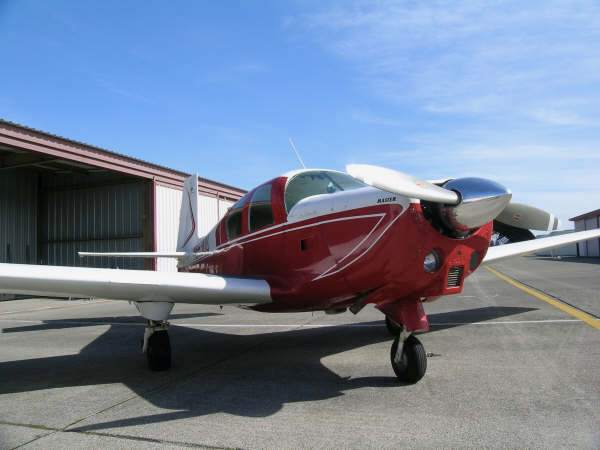
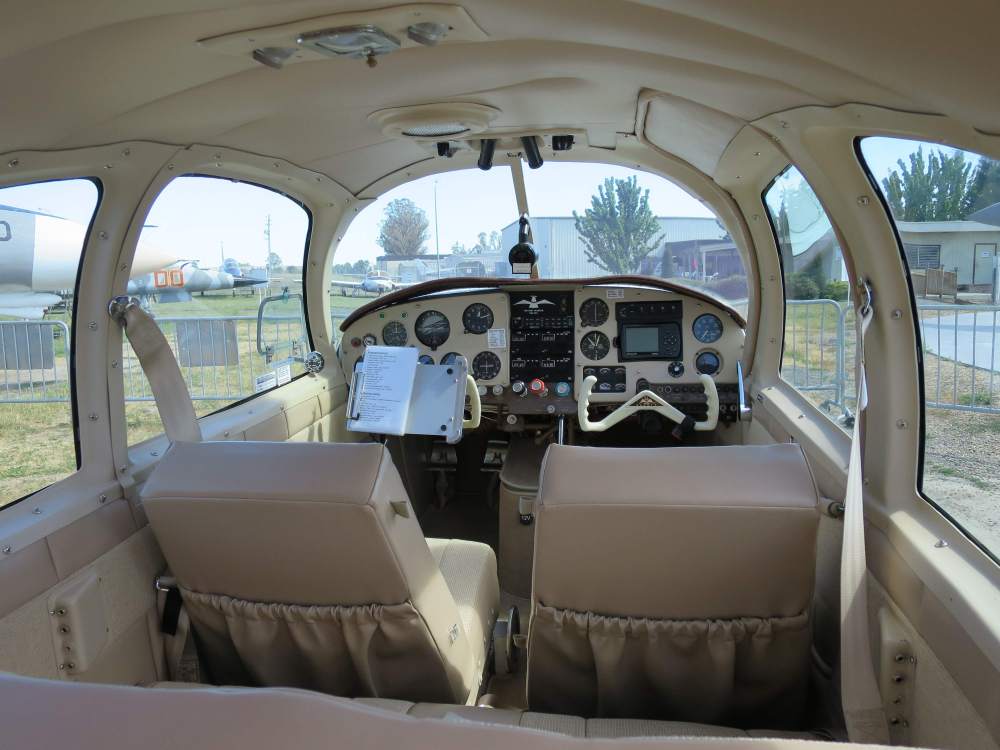

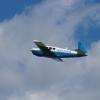
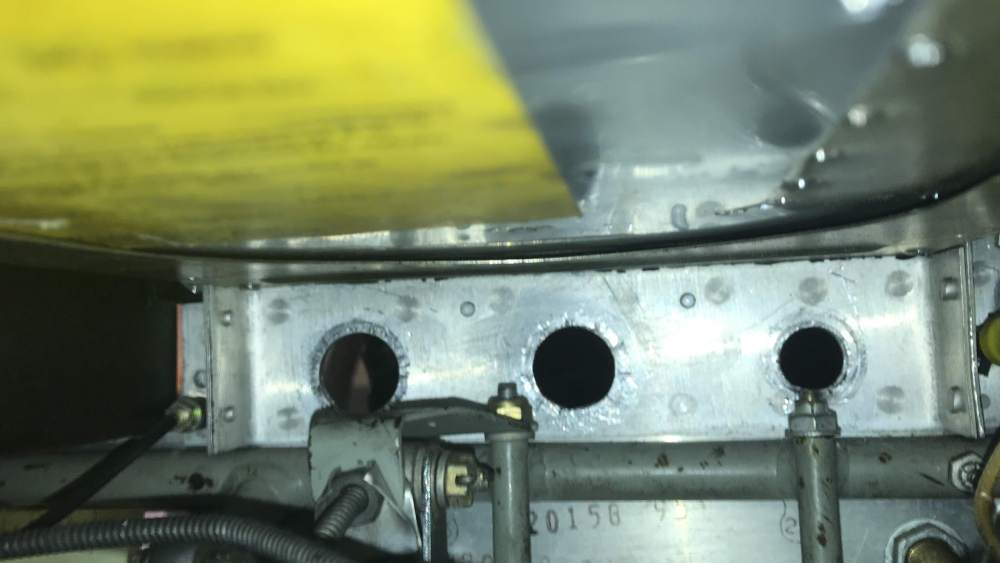



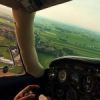

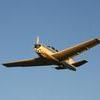

.thumb.jpg.d92e0b7ab0376d3bc82e522ce1c6e59d.jpg)
.thumb.jpg.3c54c152ca1bb5c4935647fadbe76997.jpg)
